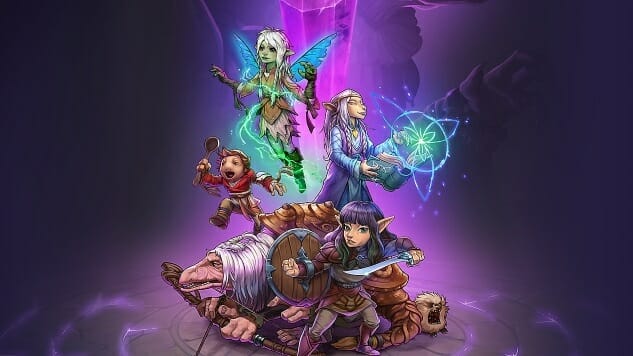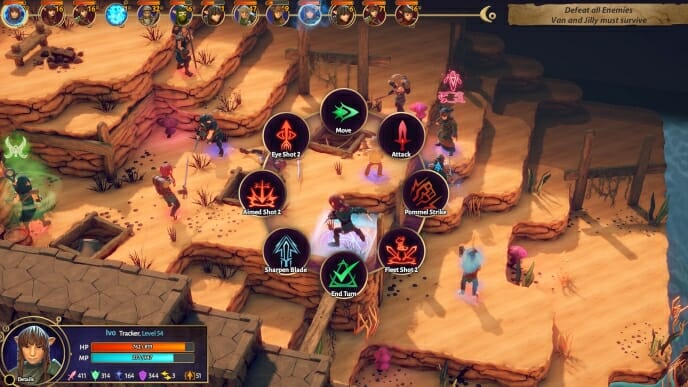The Dark Crystal: Age Of Resistance Tactics Doesn’t Know Why It Exists

For a game about social unrest, The Dark Crystal: Age Of Resistance Tactics says remarkably little about the subject. In fact, it says very little about anything in particular. Given its E10+ rating, perhaps it’s a problem of its intended audience—the fear of edging that rating to a dreaded T seems to make the game avoid any kind of thematic depth.
It’s not that Crystal couldn’t make a statement. The strategy RPG genre is filled with defining titles such as Final Fantasy Tactics and the Fire Emblem franchise that have their own unique takes on war and how that affects those that fight in them. Funny enough, Fire Emblem’s Game Boy Advance offerings said more about conflict with far fewer resources while boasting an E rating, featuring little more than pixel portraits and abstracted maps. Take Sacred Stones, for example: the continent of Magvel, much like the world of Thra, is divided into several geographic regions, but Sacred Stones feels more complete as a world than Crystal’ take on Thra, and the strife that permeates Magvel is communicated and felt—you worry for its characters, of which there are upwards of 30 playable units, more than Crystal’s hollow takes on beloved and comparatively small cast.
It’s a shame, because the groundwork is there—Dark Crystal has an enchanting world with well-explored lore, rich characterization, and thought out history, but all of that is lost in the game. Dark Crystal is, of course, known for Jim Henson’s incredible puppetry work. Here, we have lifeless 3D models with short looping animations devoid of identity. You get none of Deet’s crunchy gentleness, or any of Brea’s headstrong wit. Instead, you’re left with 14 interchangeable units, which, for all intents and purposes, are effectively the same in terms of what they can do in battle. You get a better sense of Disgaea’s creatable units, who have no speaking lines. They, at the very least, have colorful art and purposeful animations.
In contrast to character-driven strategy RPGs like Final Fantasy Tactics and Fire Emblem, I felt overwhelmed with the 14 playable characters present in Crystal. Most maps allow you to deploy four units, and given the very light amount of customization present in the game, there’s absolutely no way you’ll need to use more than a handful of them. Even if you wanted to, the game makes it near impossible to keep them all amply equipped. I barely even know who these characters are—almost all of them are introduced through a series of non-sequiturs, absent of any emotional payoff. When Gurjin is captured by the Skeksis and tortured, I asked myself “Wait, who was Gurjin again? Was he the scout or the soldier in the last battle?”

-

-

-

-

-

-

-

-

-

-

-

-

-

-

-

-

-

-

-

-

-

-

-

-

-

-

-

-

-

-

-

-

-

-

-

-

-

-

-

-








































